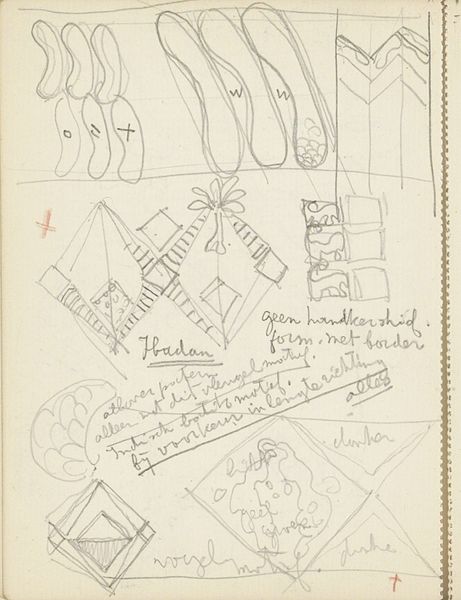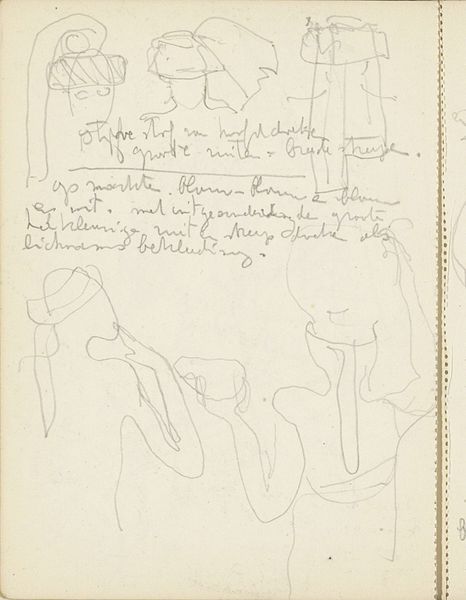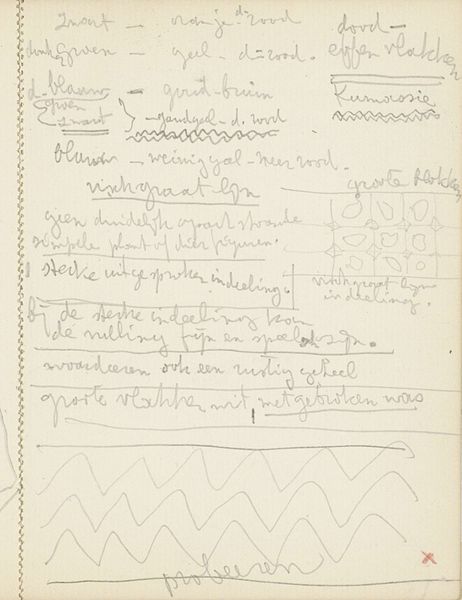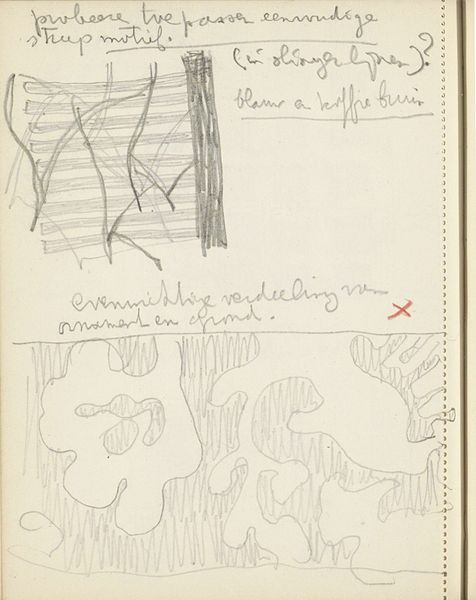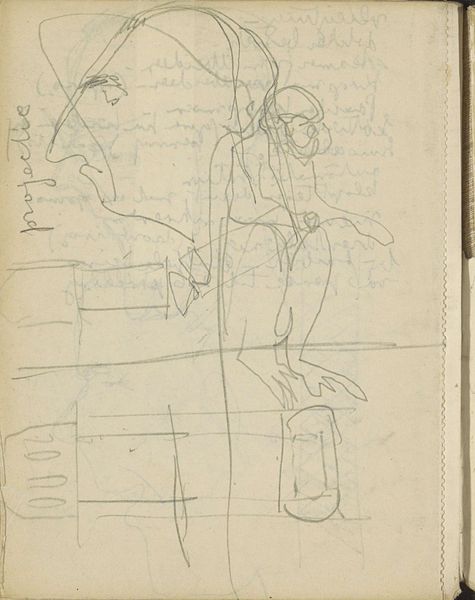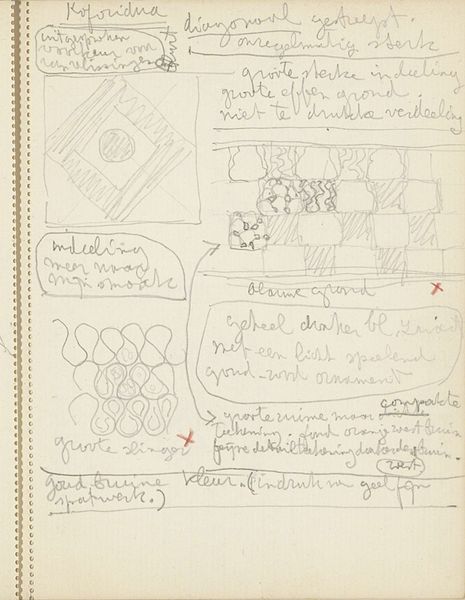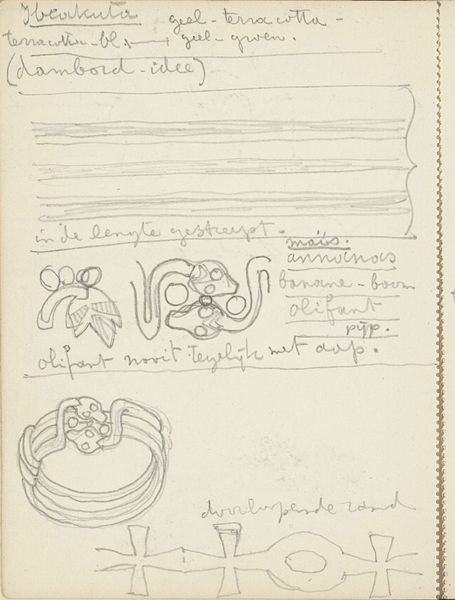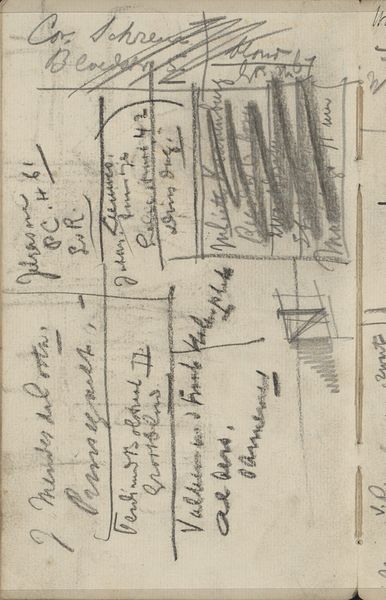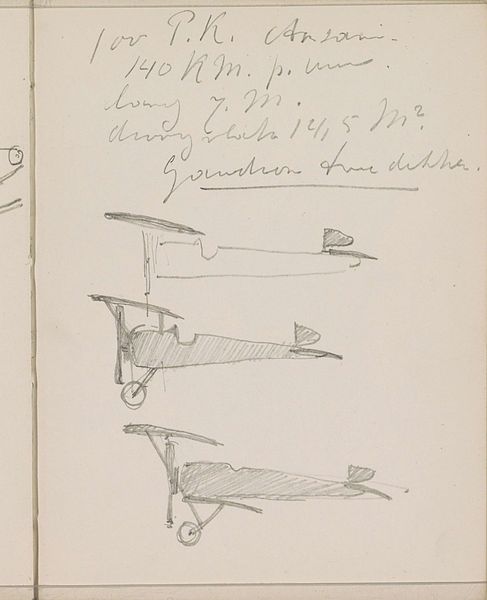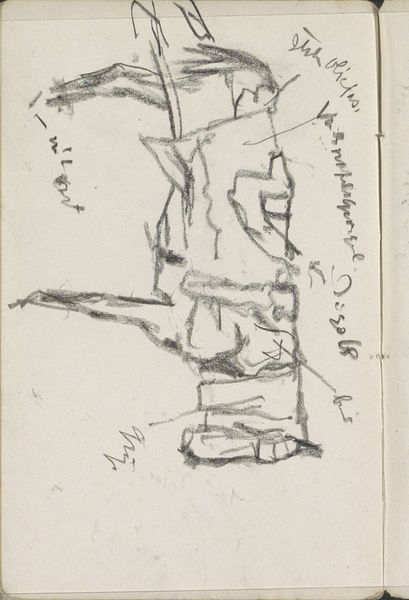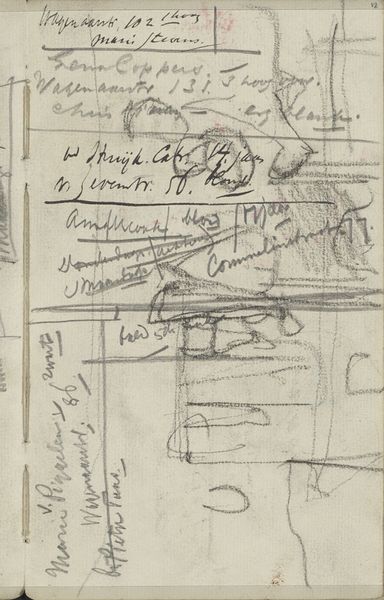
drawing, paper, pencil, graphite
drawing
comic strip sketch
hand drawn type
paper
personal sketchbook
idea generation sketch
sketchwork
pen-ink sketch
pencil
abstraction
pen work
graphite
sketchbook drawing
storyboard and sketchbook work
sketchbook art
modernism
Copyright: Rijks Museum: Open Domain
Editor: Here we have Reijer Stolk's "Decoratief vlekkenpatroon," dating sometime between 1916 and 1945. It's a mixed media piece, using graphite, pencil, and pen on paper, and currently held in the Rijksmuseum. The composition seems split between textual notes and an abstract sketch. It gives me the impression of flipping through a designer’s notebook. What strikes you most about it? Curator: It's interesting to see this drawing through the lens of institutional history. Consider that this was made during or immediately after World War I, a period of tremendous social upheaval and a challenge to traditional artistic values. How might the shift towards abstraction, as seen here, reflect a broader cultural questioning of established norms and representational styles? The inclusion of color notes seems almost systematic, hinting at design principles. What public role did abstraction play during that time? Editor: I suppose abstraction allowed artists to bypass direct representations of wartime realities or propaganda. So, do you think the "vlekkenpatroon" —the stain pattern—could represent a liberation from those expectations? Curator: Precisely. And consider how the materials – simple pencil and paper – further democratized artmaking. Sketchbooks allowed artists to explore ideas privately, influencing the development of modern art beyond traditional academic structures. The rise of smaller, intimate works meant art was for the many and no longer only for elite patronage, which profoundly changed what the public expected from art. The notes, however, are what draw me in. Does that shape how we can interpret its historical purpose? Editor: I didn't initially consider the effect the socio-political elements had on its aesthetic purpose, and now I am considering this art piece from a totally different angle. Curator: It's amazing what history and societal context bring to it all, isn’t it?
Comments
No comments
Be the first to comment and join the conversation on the ultimate creative platform.
